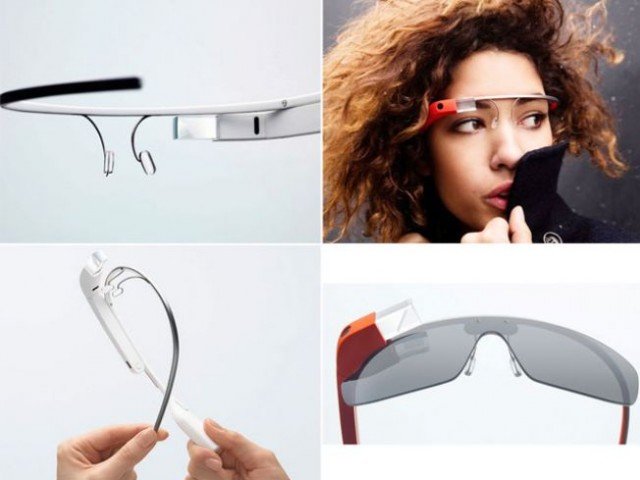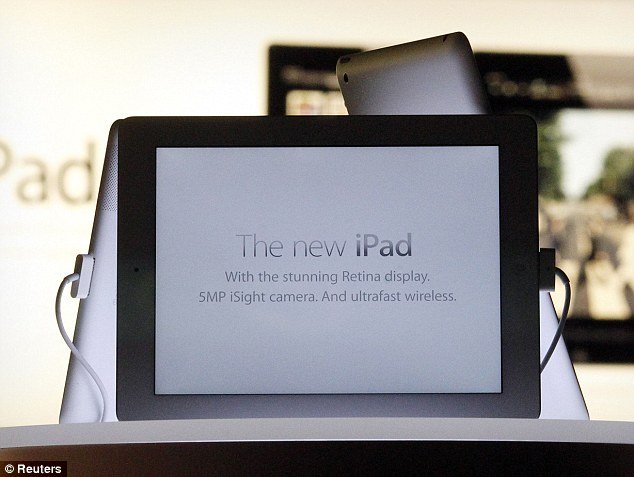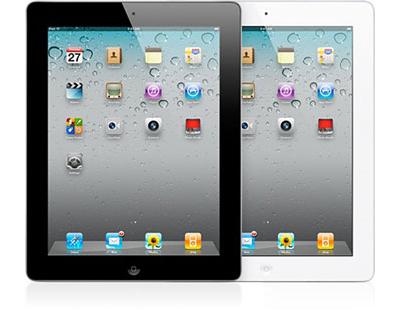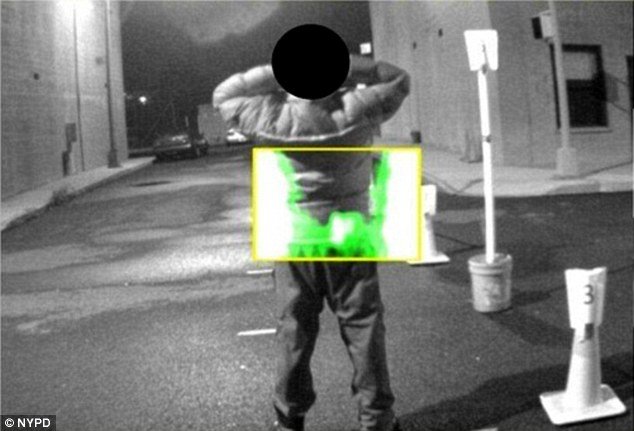Home Tags Posts tagged with "gadget"
gadget
Developers working on apps for Google Glass have been informed they will not be allowed to place ads within the device’s display.
The newly-published terms and conditions for developers working on Google Glass also prohibit companies charging for apps.
The smart glasses, which have a five megapixel camera and voice-activated controls, have started to be shipped.
The first devices will go to developers and “Glass Explorers”.
Google held a competition earlier this year inviting potential users to come up with ways to use the device, while developers have been eager to be among the first to try out the technology.

Developers working on apps for Google Glass have been informed they will not be allowed to place ads within the device’s display
As part of the announcement, Google also gave the first official details of the device’s specifications.
The bone conduction transducer allows the wearer to hear audio without the need for in-ear headphones – sound waves are instead delivered through the user’s cheekbones and into the inner ear.
Google promises a battery lasting for “one full day of typical use”.
Google Glass display is the equivalent, the company says, of looking at a 25 in (63 cm) high-definition screen from eight feet away. The device is able to record video at a resolution of 720p.
It has 16GB on-board storage, and connects with other mobile devices via Bluetooth and Wi-Fi.
To date, it is privacy groups that have offered the strongest dissenting view against Google’s plans with Glass.
One campaigner from a group called Stop The Cyborgs, wrote “We want people to actively set social and physical bounds around the use of technologies and not just fatalistically accept the direction technology is heading in.”
He predicted that the focus of coverage about the device would shift from talking about the “amazing new gadget that will improve the world” to “the most controversial device in history”.
For developers, that controversy could begin with wondering how exactly they will be able to make money from the device.
Also keeping an eye on the excitement generated by Google will be Japanese firm Telepathy Inc.
Their device, the Telepathy One, has been touted as a possible competitor to Google Glass.
Chinese search giant Baidu has also confirmed it is working on a Glass-like project – but details are so far scant.
[youtube DSgF0rpGI9E]
Security researchers have found that data captured by smartphone sensors could help criminals guess codes used to lock the gadgets.
By analyzing data gathered by accelerometers they were able to get a good idea of the PIN or pattern used to protect a phone.
The data was useable because sensors can gather information with more freedom than apps loaded on the device.
Researchers said several different smartphone sensors could be subverted.
Dr. Adam J. Aviv, a visiting professor at Swarthmore College in Pennsylvania, carried out the attacks by using data gathered by an accelerometer on a smartphone. Typically this sensor logs phone movements in three dimensions: side-to-side, forward-and-back and up-and-down.
The data gathered as the phone is moved is often used in games to steer or guide an onscreen entity such as a car or a ball.
Working with Matt Blaze, Benjamin Sapp and Jonathan Smith from the University of Pennsylvania, Dr. Adam J. Aviv realized that the data gathered by the accelerometer could also be used to work out where someone tapped on a screen when unlocking a gadget with a PIN or pattern.

Security researchers have found that data captured by smartphone sensors could help criminals guess codes used to lock the gadgets.
In controlled tests, data from accelerometers was captured, exported and analyzed to see if it matched a bigger “dictionary” of taps and swipes that had been previously gathered.
“It worked surprisingly well,” said Dr. Adam J. Aviv of the attack. In tests, the software developed by the team got more accurate the more guesses it was allowed.
After five guesses it could spot PINs about 43% of the time and patterns about 73% of the time. However, said Dr. Adam J. Aviv, these results were produced when PINs and patterns were picked from a 50-strong set of numbers and shapes.
The PIN and pattern spotting system did less well when it was applied to data gathered when users were walking around with gadgets. Using a phone while on the move introduced lots more “noise”, said Dr. Adam J. Aviv which made it harder to pick out the unlock patterns.
However, he said, many security researchers were getting interested in the sensors that came as standard in smartphones largely because the data they gathered was not subject to the same controls that governs other phone functions.
“More sensors on smartphones equals a lot more data flowing through these devices, which means protecting them is even more critical,” said Kevin Mahaffey, chief technology officer at mobile security firm Lookout.
“One kink or hole in the system could lead to data being exposed and utilized,” he said.
“As the physical and digital worlds merge, and we become more reliant on the interconnections forged, we need to collaborate across them to ensure the integrity of data.”
Dr. Adam J. Aviv said that typically users did not have to give permission for a sensor to gather data even if the information it grabbed had nothing to do with the application they were using.
Other researchers had looked into ways to subvert data gathered by gyroscopes, accelerometers and other orientation sensors to work out passwords, said Dr Aviv. One group even analyzed smears on touchscreens to get clues about Pins and patterns.
“We are starting to realize that the way we interact with these devices affects the security of these devices,” he said.
“The fact that we hold them in our hands is different to the way we use traditional computers and that actually can leak information to sensors in the device.”
Apple is believed to be secretly developing a “smart watch” with a touchscreen.
Chinese online sites have reported the computer giant is working with chipmaker Intel with a wrist worn gadget that has a 1.5 inch screen and uses Bluetooth to communicate with other gadgets, which could include an iPhone.
The “iWatch” will go on sale next year, the report claims.
Chinese site Tech.163 claims Intel has developed a Smart Watch that Apple is interested in.
The in question has a 1.5 OLED display with indium tin oxide, or ITO coated glass, and uses Bluetooth to communicate with a user’s iPhone.
It is believed the iWatch will run a version of iOS, the same software as the iPhone and iPad, allowing apps to be easily downloaded.

iWatch is believed to go on sale next year
Releasing a watch could also help it compete with Google, who claim they will release “Google Glass”, a headset with a screen, next year.
The rumors come after an independent attempt to create a smart watch, called Pebble, became a huge success online.
Its inventors used Kickstarter to try and raise $10,000 so they could develop it – but instead raised $10 million, and hope to begin production next year.
“Pebble is the first watch built for the 21st century,” say its creators.
“It’s infinitely customizable, with beautiful downloadable watchfaces and useful internet-connected apps.
“The watch will connect via Bluetooth, and alert users to incoming messages via vibrations – and apps bring Pebble to life.
“Cyclists can use Pebble as a bike computer, accessing the GPS on your smartphone to display speed, distance and pace data.
“Runners get a similar set of data displayed on their wrist. Use the music control app to play, pause or skip tracks on your phone with the touch of a button.”
Samsung Electronics says that it expects its profits to surge 79% in the second quarter as sales of its smartphones continue to grow.
It has forecast an operating profit of 6.7 trillion won ($5.9 billion) for the period, its highest quarterly profit since 2008.
Samsung overtook Nokia as the world’s biggest maker of mobile phones earlier this year.
Analysts said its profits may rise even further in the coming months.
“Earnings will be stronger in the current quarter as sales of the high-end Galaxy S III will increase dramatically and drive the telecom division’s earnings to above 5 trillion won,” said Nho Geun-Chang an analyst with HMC Investment Securities.
“We estimate shipments of the Galaxy S III will reach 19 million units in the third quarter.”

Samsung Electronics expects its profits to surge 79 percent in the second quarter as sales of its smartphones continue to grow
Samsung launched the Galaxy S III, the latest version of its Galaxy range of smartphones, in May this year, and the gadget has been well received in the market.
Last month, the head of Samsung’s mobile phone division Shin Jong-kyun said that the firm expects to sell 10 million units of the model by July.
While it has enjoyed early success, some analysts were of the view that its sales may slow towards the end of the year due to the widely-expected launch of the latest version of the Apple iPhone.
The iPhone is seen by most analysts as the biggest rival to Samsung’s smartphones.
“We expect a correction in Samsung’s earnings in the fourth quarter, as the launch of the new iPhone will lead to a decline in Samsung’s profit in the high-end smartphone business,” said Park Jong-Min a fund manager with ING Investment Management.
Increased competition from the iPhone is not the only challenge Samsung has to deal with in the coming months.
It is also involved in a number of legal disputes over patent infringements with Apple in various countries across the world.
Earlier this month, a court banned sales of Samsung’s Galaxy Nexus smartphone and also its Galaxy Tab 10.1 tablet PC in the US, until it decides on the continuing patent case between the two firms.
There are concerns that the ban may hurt Samsung’s sales in one of its key markets.
Analysts said the biggest fear for Samsung is that the dispute may become bigger and impact other Samsung products, including the Galaxy S III.
“What they are worried about are the legal spill over effects,” said Jasper Kim of Asia Pacific Global Research Group.
“How Judge Lucy Koh’s decision to block some of these Samsung smartphones into the US market, which is Samsung’s largest mobile carrier market, will effect Galaxy S III sales. That’s what Samsung is really worried about.”
The new iPad, which went on sale last Friday, appears to be 5 C hotter than its predecessor when running, according to Dutch technology website Tweakers.
One disgruntled customer said he was returning his after it reached temperatures of 47 C (117 F) following only ten minutes of use.
Customers have complained that the gadget is “too hot to hold”, particularly when playing games, prompting a spokesman for the U.S. watchdog Consumer Reports to announce it was conducting its own “scientific analysis with thermal imaging”.
Consumer Reports found that the product became “significantly hotter” after playing the popular game Infinity Blade II, with temperatures of 47 C recorded on the device’s front and back.
However, tester Donna Tapellini said the gadget was “not especially uncomfortable if held for a brief period”.
One user of Apple’s official support website said: “I think we all know what we have to do – which is to return the iPad.
“They simply did not do a good enough job with this iPad, maybe next year. They also have so much money now that they are giving it away to the stock holders.
“It was reported that Apple sold over 3 million iPads over the weekend. I hope they all return their iPad forcing Apple to revise and fix this iPad sooner rather than a year from now.”

The new iPad, which went on sale last Friday, appears to be 5 C hotter than its predecessor when running, according to Dutch technology website Tweakers
A spokesman for Apple said the new iPad’s performance was “well within our thermal specifications”, adding that concerned customers should contact the company.
The launch of the iPhone 4 in 2010 was also troubled, with buyers complaining that the handset could not connect to the internet or make calls if held in a certain way.
Tweakers said: “On the left is the new iPad – with a temperature of 33.6 C in the lower right hand corner.
“The iPad 2 scored in the same place a temperature of 28.3 C, a difference of 5.3 C.”
The Dutch bloggers say that their image tallies with complaints on Apple websites.
“Forum messages noted that the location of the processor is a hot spot,” says Tweakers.
“At 33.6 C, the iPhone is not too hot to touch, although the warmer housing is very noticeable.”
On blogs, some iPad owners have even claimed that it goes into “cool down mode” and freezes until it has reached a stable temperature.
The issue seems to be confined to the bottom left hand side, though some people said that the whole left side of the device was too hot.
User Faatty began the discussion by posting: “It gets rather warm/hot after 30 minutes of usage. It has never happened on my iPad 2. Do you think it’s harmless or..?”
Rawwave added that his got “almost too warm to hold whilst malegno” said: “The heat on mine is concentrated on the bottom-left although the whole left side seems to be hotter than the right side.”
In a separate threat on the Apple website user znz212 wrote: “It begins getting warm within about 10 minutes for me, and after about 25 it’s quite hot to touch (not hot enough to burn or anything, but hotter than it feels like it should be).
“I can even feel the heat on the front – the top half of the screen is warmer than the bottom half.
“It cools down very fast (within 5 minutes) when locked or even on the home screen, so I’m not sure if the heat is normal with the new chip.”
Apple has not addressed the problem directly but customers who took their iPad to a store have written that it has been exchanged for a new one with no problems.
This is not the first time that Apple has run into teething problems with its gadgets.
The launch of the iPhone 4 was marred by reports that it would not connect to the Internet if it was held in a certain way.
Apple solved the “grip of death” issue by giving out a free silicone rubber band to put round the phone.
Among the other glitches have a software problem with iPhones and iPod touches which stopped the alarm clocks working until Apple issued an update to sort it out.
The iPad went on sale on March 16 and was widely praised for its 3.1 million pixel 9.7″ Retina display, which is the sharpest out of any tablet computer.
On the official Apple website it says the iPad should stay below 35 C for optimum “operating temperature”.
More than 750 gadget fans spent hours of waiting in line outside Apple’s flagship store in New York to get their hands on the new iPad, which went on sale at 8:00 a.m. today.
The lines outside the Fifth Avenue store were even longer than experts expected, with people huddling together in sleeping bags – and others making money off their places in the line.
Amanda Foote, who camped for nearly 48 hours, received an offer of $1,000 for her spot, behind only two other customers – but was hoping to collect even more for the coveted position.
The queues through the night – across the United States and the nine other countries where the iPad was launched – came despite Apple accepting online orders a week ago.
According to experts, the lines through city centres are worth $700 million to Apple. Not only are customers forking out $499 for an iPad, but they are giving Apple millions in free publicity.
Analysts told SmartMoney that the coverage is worth more than Apple’s worldwide marketing budget, which was nearly $700 million in 2010.
“The Apple lines have become a cultural phenomenon,” social psychologist Matt Wallaert said.
“You couldn’t advertise your way into the images of adoring fans that led to Beatlemania. Apple has achieved exactly that.”
Patient customers across the country said the product was well worth the wait.
“The screen resolution is amazing,” Robby Grossman told the Boston Globe. Tech reviewer Daniel Romero added: “After an hour of use I can say it was worth spending $500 and waiting in line for.”

More than 750 gadget fans spent hours of waiting in line outside Apple's flagship store in New York to get their hands on the new iPad
Others were battling the queues to make a profit.
Dan Krolikowski, 34, was first in line at a Madison, Wisconsin mall after arriving 14 hours early.
“Last year I sold one on eBay and made over $500 in profit,” Dan Krolikowski said from his reclining chair at the head of the line.
“I’m hoping to do that again this year.”
At the flagship Apple Store on New York’s Fifth Avenue, the way many customers were paying for two iPads each suggested many of the tablets were destined to be resold abroad.
“My buddy’s paying me $120 to wait in line for him,” he said.
“He’s going to come over here at eight and pay for the iPads – he’s buying two of them.”
The line-up of fanatics at the store was comprised of many people who turned out for the launch of the iPad 2 last year, according to Russian Michael Sochin, 29.
When asked why he felt the need to get the iPad on the day of its release, rather than skipping the queues and waiting for a week, Michael Sochin said: “I don’t know… it’s like a drug.”

Reviewers are gushing over the new iPad 3.1million pixel screen, comparing the experience to that first moment of putting on prescription glasses after years of poor eyesight
A queue has already formed outside the flagship Apple store on London’s Regent Street as people wait to snap up the gadget when it goes on sale.
Zohaib Ali, 21, of Uxbridge, who is the first in line after queuing for five days, said: “The iPad is the best product of the year and there won’t be any more until 2013 so I am happy to queue. I love Apple products.”
Zohaib Ali suffers from autism and his mother, Rahat Ali, believes that Apple products have helped him overcome his disability.
Rahat Ali said: “Apple products are very good for autism. They are very easy to use and he is relaxed when he is using them. Usually he doesn’t want to go out in a crowd but he is very happy queuing here.”
The tablet computer, which has a higher resolution screen than previous models and a five megapixel camera with auto focus and auto exposure, ranges in price from £399 ($630) to £659 ($1,040) in UK.
Despite competition from cheaper rivals the iPad remains the most popular tablet computer. Apple has sold more than 55 million iPads since its launch in 2010, including 40 million last year.
Zohaib Ali’s friend, Ali Tarighi, 18, of Acton, has been queuing with him since Saturday morning. He said of the new iPad: “I wanted to be one of the first to get my hands on it really.”
Ali Tarighi added: “It can be hard at times, especially at nights. It gets really cold but it’s going to feel great when I hold the iPad up in triumph.”
Those waiting were handed free food and drink by companies they had contacted through Twitter.
Harry Barrington-Mountford, 22, of Upminster queued to buy the iPad 2 with his girlfriend Fenella Barnes, 30, and is now waiting for the newest model.
He said: “We had such a great time queuing last time that we decided to do it again. People always stop to talk to us. I am exhausted though, I have only had about 45 minutes of sleep.”
Fenella Barnes is not intending to buy an iPad for herself but is queuing up to buy one for a friend. She said: “I have been tempted to get one but I haven’t been tempted enough. If I had a spare £500 [$790] then maybe I would consider it!”
Customers have also been queueing overnight in other countries including France and Singapore.
The very first customer in the world to buy the new device was 34-year-old construction manager David Tarasenko, who grabbed one at the stroke of midnight at a Telstra store in Melbourne, Australia.
While the new pad is more of an evolution than a revolution in most areas, it is not hyperbole to refer to the display as a revolutionary jump, and it appears to be love at first sight for every single person who gets a glimpse.
Reviewers are gushing over the 3.1million pixel screen, comparing the experience to that first moment of putting on prescription glasses after years of poor eyesight.
While Apple are notoriously clever at pre-launch PR, and cherry-pick their review outlets, even the most unbiased of reviewers, such as the highly-regarded Walt Mossberg of AllThingsDigital, can’t help but fall in love with the crystal-clear display.
[youtube t-5BTpKuXY0]
[youtube FgPgONR2rcw]
[youtube 9GN62sUVh2c]
It has emerged that Apple has already sent out invitations to the San Francisco launch of its new iPad 3 this week.
As expected, iPad3 will be unveiled on March 7 at a special even in the Yerba Buena Center for the Arts in San Francisco.
Apple’s invitation says: “We have something you really have to see. And touch.”
The invitation shows a finger over an iPad screen, pointing to the Calendar app, which is set to March 7.
iPad3 is expected to offer a much higher resolution Full HD screen.
Bloomberg reports that iPad 3 processor will be a “quad-core” device, a step that would put Apple’s tablet ahead of competing devices such as Samsung’s Galaxy Tab 10.1 in terms of computing power, and enable a new generation of high-powered apps.
Tech site MacRumors claims that iPad3 will also be more expensive.
“The iPad 3 costs $80 more for the equivalent Wi-Fi models, and $70 more for the equivalent 3G models,” said MacRumors, reporting on leaks from Chinese factories.
MacRumors claims that the device will be “near identical” to iPad 2, which tallies with other leaks from Apple accessory makers.

iPad3 will reportedly look similar to iPad, but with a higher-res screen, faster processor and Siri voice control
The device is expected to look similar to the current iPad 2, but offer a far sharper HD screen and a next-generation processor capable of impressive visual effects.
The tech blog iMore reported that iPad3 is also rumored to feature the anticipated 2048×1536 Retina display, and the quad-core Apple A6 chip to boost its speed and effectiveness.
Ezra Gottheil, an analyst with Technology Business Research said last week that a March debut of the gadget was a “sure bet”.
Speaking to Computer World, Ezra Gotteil said: “It will have a higher-resolution screen.”
“That’s important to them because it means the iPad will work well with home cinema systems, since it will display full HD.”
Leaked images also hint at a casing that iPad3 looks similar to iPad 2. The validity of those pictures, could not be determined.
All Things D, a blog owned by Dow Jones, reported that the device will be introduced during a special Apple event in San Francisco.
The late Steve Jobs introduced the previous iPad there at about the same time last year.
Various Apple accessory companies were showing off iPad 3 cases behind closed doors at this year’s Consumer Electronics Show in Las Vegas, all of which hinted at a gadget broadly similar in shape to last year’s.
Popular Apple-watching website iLounge claimed to have seen a prototype behind the scenes at the show.
The site’s editor-in-chief, Jeremy Horwitz said: “From the front, the next iPad and iPad 2 appear to look basically the same – apart, of course, from the screen. That’s going to be Apple’s big focus when the new device is announced.”
US police is developing an infrared body scanner that can detect whether a suspect is carrying a weapon without needing to frisk him.
Infrared rays will be used to scan a form of natural energy – like radiation – emitted from the body of someone concealing a gun on the street.
If something is obstructing the flow of that energy, such as a weapon, the gadget will show exactly where the object is on a suspect’s body.
As a result, officers will get a digital outline of where the firearm is. The device could also be used to find suicide bomber vests, Newsday reported.

Infrared rays will be used to scan a form of natural energy - like radiation - emitted from the body of someone concealing a gun on the street
The New York Post reported that the device has been undergoing development for the past three years for the streets of New York City.
The device will be mounted on the top of NYPD vans and will shoot rays at a suspect or scan the streets for weapons.
Police Commissioner Raymond Kelly said it currently only works at a short range – from around three to four feet away from a person.
“This can be done from a short range,” Raymond Kelly said.
“We want a distance of at least 25 meters.”
Commissioner Raymond Kelly said the department is working with the U.S. Department of Defense to develop the device.
The gadget would mean the NYPD would no longer have to stop and frisk those suspected of carrying weapons – a practice which rocketed by 13% last year.
Yet there are also concerns that the gadget could be an invasion of privacy as they show an outline of a suspect’s body – similar to “naked” body scanners used in airports.
It comes as the NYPD is set to develop a new range of futuristic technology to avoid fire between its own ranks.
Raymond Kelly asked his officers to brainstorm ideas following the death of Omar J. Edwards, 25, when he was shot while off duty last week.
Omar J. Edwards had left work when he witnessed a burglary, drew his weapon and chased the suspect. Police responding to the call shot him dead.
One idea for the protective gadgets uses radio frequency tags to show officers where other cops are in the city.
Another involves tags that would work gun-to-gun and use an infrared sensor.
When a weapon is pulled from an officer’s holster it would trigger a signal – seen or heard – that would be sent to the gun of a nearby officer.








